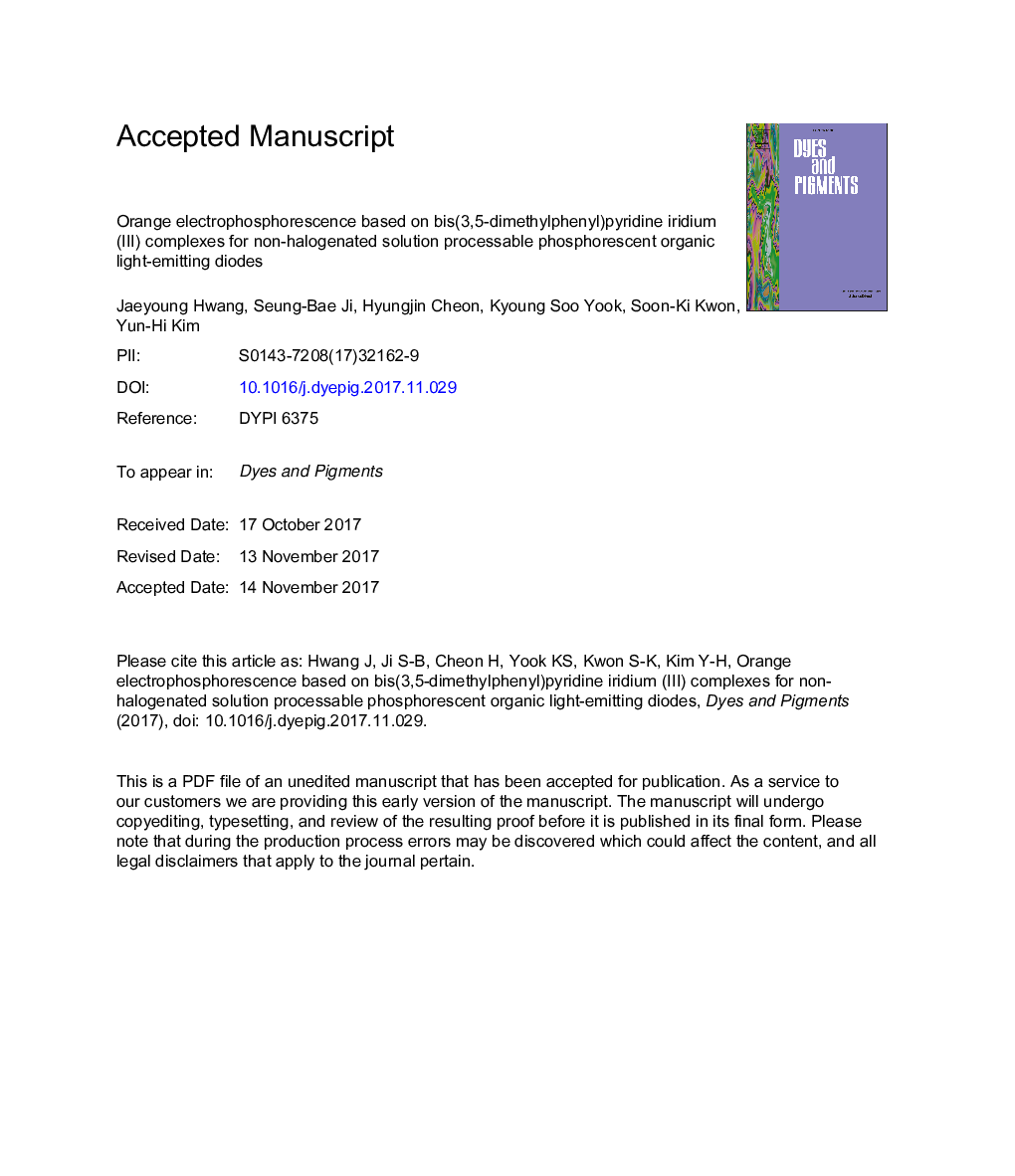| Article ID | Journal | Published Year | Pages | File Type |
|---|---|---|---|---|
| 6599610 | Dyes and Pigments | 2018 | 31 Pages |
Abstract
Two heteroleptic iridium complexes, (dmppy)2Ir(tmd) and (dmppy)2Ir(acac), which consist of phenylpyridin (ppy) as main ligand with dimethyl substituents on both the phenyl ring and the pyridine ring, and heptanedione (tmd) and acetyl acetonate (acac) as ancillary ligands were synthesized and characterized regarding their suitability as orange organic light-emitting diodes (OLEDs). The photoluminescence (PL) of (dmppy)2Ir(tmd) and (dmppy)2Ir(acac) produced orange emissions with maximum emission peaks at 577 and 570Â nm, respectively. The highest occupied molecular orbital (HOMO) and lowest unoccupied molecular orbital energy (LUMO) levels of (dmppy)2Ir(tmd) and (dmppy)2Ir(acac) were â5.03/-2.83 and â5.02/-2.77Â eV, respectively. An optimized non-halogenated solution-processed (dmppy)2Ir(tmd) device showed a high current efficiency of 52.7Â cd/A and exhibits an efficiency of 89% when compared to a vacuum-deposited device that showed 66.7Â cd/A at 1000Â cd/m2.
Keywords
Related Topics
Physical Sciences and Engineering
Chemical Engineering
Chemical Engineering (General)
Authors
Jaeyoung Hwang, Seung-Bae Ji, Hyungjin Cheon, Kyoung Soo Yook, Soon-Ki Kwon, Yun-Hi Kim,
